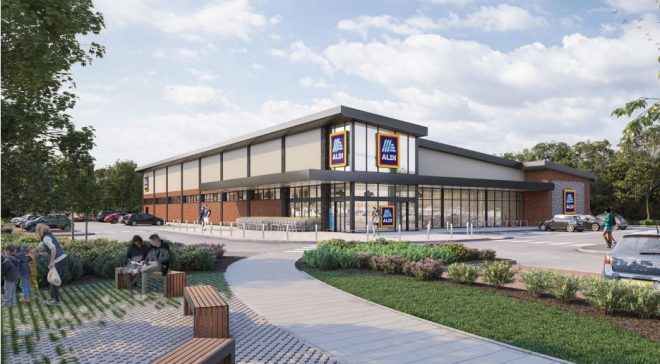Biggest green roof in National Park brings boost for biodiversity
April 24, 2022

A huge wildflower meadow teeming with butterflies, bees and other invertebrates will be created on top of a new supermarket.
Work starts this spring on building a new Aldi supermarket on a vacant 0.9 hectare brownfield site in Frenchmans Road, Petersfield.
Once completed, the building is set to have the largest green roof in the National Park.
The proposals, which will create 50 new jobs, were approved by Planning Committee.
The site was previously occupied by a large 1970s building used as a factory, offices and warehousing and the structure was demolished in 2018.
The new building will meet the BREEAM ‘excellent’ rating and, in certain specific aspects of its design around energy performance, will exceed this standard.
Solar panels and a heat-loss recovery system connected with the chiller units will be other key sustainability features, as well as a water efficiency standard that is 25 per cent higher than current building standards.
The development include four electric vehicle charging points, together with a further 20 ‘passive’ charging spaces in which electricity infrastructure is installed ready for future implementation of new charging sockets for vehicles.
Thirty two new trees will be planted and rain gardens will be created to improve drainage and attract wildlife.
Forty cycle spaces are will be provided for staff and customers.
Interpretation panels are also planned to help explain the flora and fauna on the roof of the supermarket.
 Richard Ferguson, Development Management Lead for the Western Downs, said: “This is a contemporary design building making use of a vacant brownfield site.
Richard Ferguson, Development Management Lead for the Western Downs, said: “This is a contemporary design building making use of a vacant brownfield site.
“The development makes references to Petersfield in terms of the materials used, including hand-laid brick and flint work.
“An important aspect will be the green roof that will bring significant biodiversity benefits, making innovative use of a brownfield site to help local wildlife flourish.”
